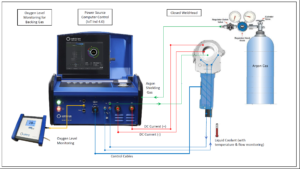
Introduction
TIG welding, also known as Gas Tungsten Arc Welding (GTAW) or Tungsten Inert Gas Welding is used most commonly in weld applications where precise weld deposits and high-quality bead appearances are required. TIG is a DC current negative (DCEN) welding system.
TIG welding is most often used to weld metals like stainless steel, aluminum, magnesium, and copper alloys. TIG welding is an arc welding process that operates at high temperatures (over 3,300deg C / 6,000 degrees F) to melt and solidify metals.
TIG welders have better welding control over the arc and the process than any other welding methods, which makes for stronger, higher quality welds.


How it works?
In TIG welding, an electric arc is created between the work piece and a non-consumable tungsten electrode. The weld pool or weld puddle is shielded from atmospheric contamination by inert shielding gases. The gas is fed through a TIG torch and surrounds the weld pool to keep it free of contaminants. Sometimes, a filler metal, called a TIG rod, is inserted into the arc to facilitate the welding process. Below diagram explain the set up of a manual TIG welding system.

Orbital Welding System – Concept
Orbital welding system is a type of TIG welding system. Below is diagram explain the key components in orbital welding system.

For more detail, log on to www.orbitechnik.com

It’s nice that you also addressed how contaminants are controlled when it comes to welding. I’m interested in learning more about orbital welding equipment because I think having those would be beneficial for my workshop. Hopefully, it will be easy to find a spot where I could put it.